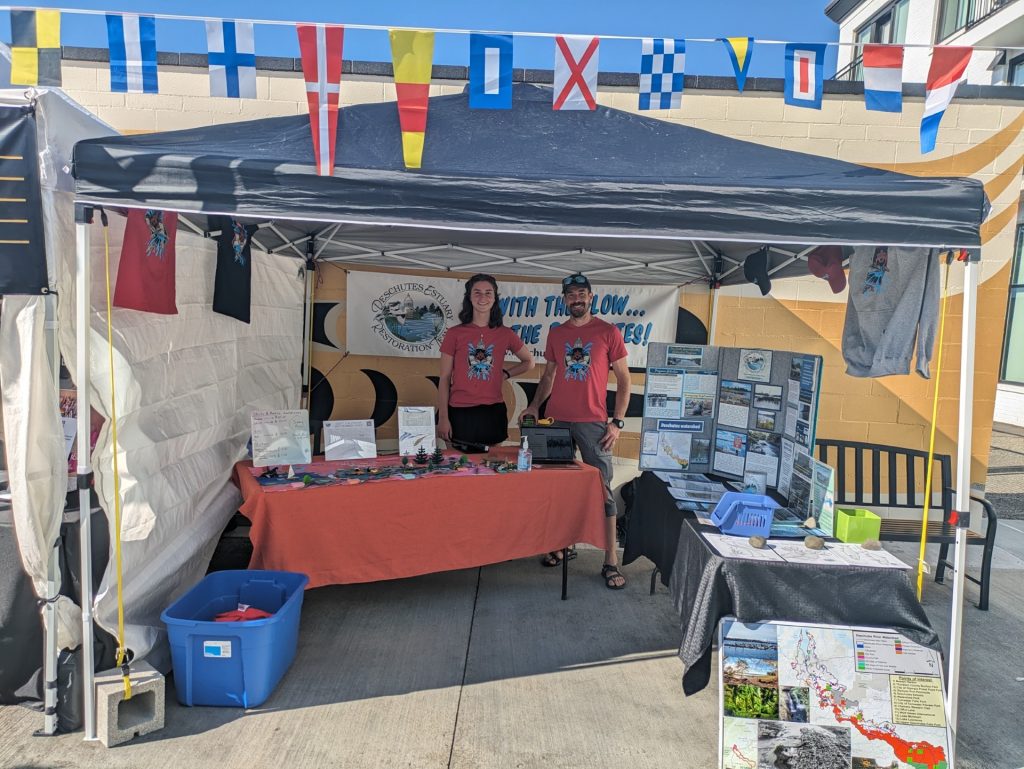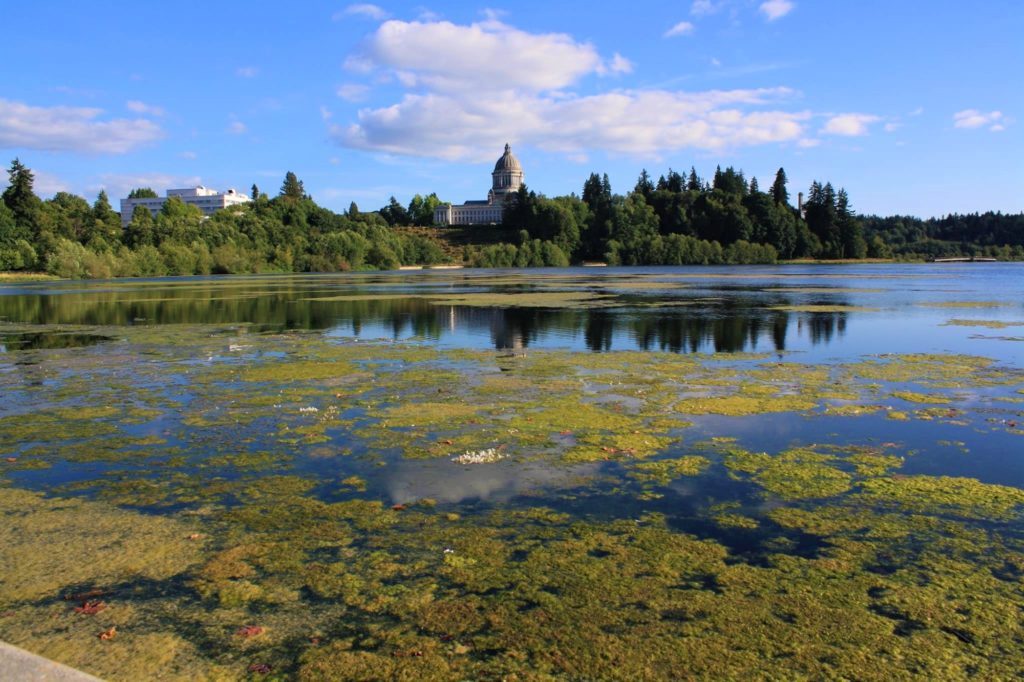The reflective views of Capitol Lake are iconic to Olympia’s landscape. The estuary, which had previously always been there, was dammed in 1951, to create the reflecting pond. Many locals remember swimming there. However, over time bacteria, oxygen, and sediment levels became concerning along with invasive species of the New Zealand mud snail and Eurasian milfoil. The aesthetics have diminished along with its ecological health.
Sharp controversies arose over the optimal solutions. How do you manage the health of the lake? What happens if the dam is removed? Would it be better restored to an estuary? Was there something in-between? DERT, the Deschutes Estuary Restoration Team has been tenaciously working to educate people about the restoration and long-term health of the waterbody this community loves.
DERT is Turning the Tide
DERT was formed as a 501c3 in 2011. “I believe in protecting the environment where we live,” says Sue Patnude, co-founder of DERT, current treasurer and one who had been actively involved since 2009. The organization has slowly built support for removing the dam and having an estuary. “Many people don’t realize the Deschutes Rivers runs into the lake,” she adds. Over the years DERT has worked with legislators and state agency leaders to account for the true costs of ongoing dredging and how a restored estuary offers so many more benefits.
Capitol Lake is within the whole former estuary where fresh water from the Deschutes River mixes with the saltwater of Puget Sound. The estuary has generations-long cultural and spiritual connections to local tribes, especially the Squaxin Island Tribe. The word ‘Steh-Chass’ names the people and land of the Deschutes Estuary.
As it currently exists, 35,000 cubic yards of sediment from the Deschutes River and Percival Creek are transported into the Capitol Lake Basin. This continues to alter the depth, clarity and health of the lake. Water quality monitoring didn’t begin until 1970. It was initiated by the excessive growth of aquatic plants and dense algal mats. Swimming and recreational use came to a stop. Conversations began about the future of the waterways. Eventually the decisions were made to move forward with the restoration of the estuary, a project of impressive magnitude in time and expense that will yield generations of benefits.

Benefits of Estuary Restoration
After the 5th Avenue Dam has been removed, it will be replaced with an approximately 500-foot-wide opening as a way to reintroduce tidal flows to the project area. The salty Budd Inlet will mix with freshwater from the Deschutes River.
Fish and Wildlife: The natural transition between freshwater and salt water are favorable to salmon including Orca and Chinook salmon. It provides a place for salmon for juvenile rearing, foraging, and outmigration. Learn more science here.
Wetlands: The area will include 85 acres of salt marsh and 100 acres of estuarine habitat.
Climate Resiliency:Flood elevations are lowered by up to one foot across the City of Olympia, compared with the dam currently in place.
Water Quality: It improves dissolved oxygen conditions which are helpful for fish and aquatic life.
Restorative Justice: It makes significant progress to restore a landscape with cultural and spiritual significance to the Squaxin Island Tribe.
Economics: Increased development and access to locals and visitors.
Environmental Health: Potentially reduces cleanup costs for the Port of Olympia by depositing ‘good’ quality sediment over areas of low contamination downstream.
Carbon Sequestration: Salt marsh habitat sequesters more carbon than the existing freshwater habitat, which is crucial for limiting climate change.
Transportation: The new 5th Ave Bridge will have separated lanes for vehicles, bikes and pedestrians.
Public Services & Utilities: Avoids increased regulatory burden and associated costs for LOTT Clean Water Alliance and other treatment plants.
Aquatic Invasive Species: Eradicate more than 10 known aquatic invasive species
Recreation: After the dam is removed, the recreation area will have a mile of new boardwalks along with the loop around the North Basin. The fishing pier will be restored. There will be a hand-carried boat launch for water-based activities and places to observe wildlife.

Capitol Lake Estuary Updates
The Department of Enterprises Services (DES) and the team at Floyd/Snyder are continuing with thoughtful and diverse community outreach and coordination with the Squaxin Island Tribe. The designs are thorough and rigorous.
- The ecological designs focus on a fully restored estuary with a diversity of habitat types, elevations and edges within basin dredging and construction focused on enhancing natural processes.
- The Squaxin Island Tribe has received a $6.4 million grant from NOAA, the National Oceanic and Atmospheric Administration, as part of the Bipartisan Infrastructure Act and Inflation Reduction Act. It will pay in part for the fish barrier removal in South Puget Sound and advance the design and permitting of the Deschutes Estuary Restoration Project.
- Greater Olympia’s business community and the whole region will benefit from increased access to recreational and cultural activities within the basin for generations to come.
- The project believes and respects the environment’s ability to remediate, repair and provide, as demonstrated in the Environmental Impact Statement. (EIS). This will help mitigate long standing water quality issues as well as a benefit for salmon and other wildlife that rely on marine, aquatic and terrestrial habitat for their survival.
Festival of the St̓əč̓as at Heritage Park
Join DERT for a cultural festival of the Squaxin Island Tribe to celebrate salmon recovery through the restoration of the st̓əč̓as (the Deschutes Estuary) on August 17, 2024 from 10 a.m. to 8 p.m. It coincides with the 50th anniversary of the Boldt Decision. The event is open to the public with plenty of activities including storytelling, workshops, educational booths, performances, singing, drumming, art and more.
Join the excitement of bringing health and energy to our community. Support, become a member, and learn more at the DERT website.



















































